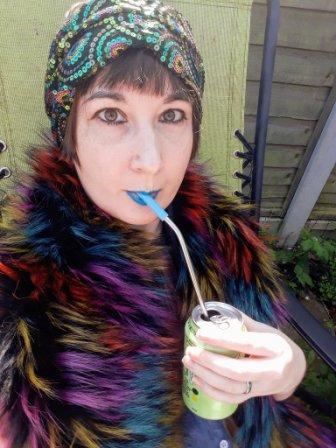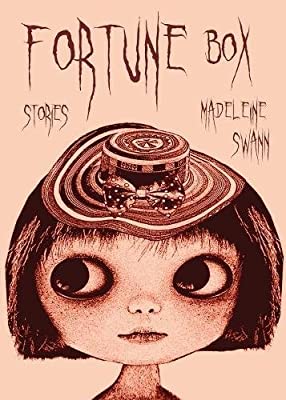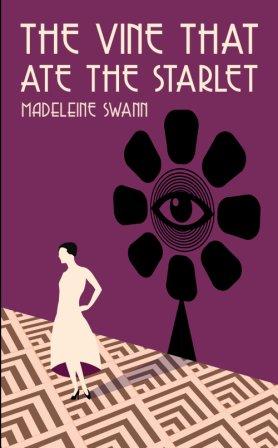Welcome back for this week’s author interview! Today, I’m thrilled to spotlight the talented Madeleine Swann! Madeleine is the author of Fortune Box and The Vine That Ate the Starlet, among other awesome works.
Recently, she and I discussed her inspiration as well as her favorite parts of the writing process!
A couple icebreakers to start: when did you decide to become a writer, and who are some of your favorite authors?
 I’ve always written in some form or other but stopped when I was working a boring job. Then, after a breakup around 2010/2011, it just hit me what was missing and I started taking it a lot more seriously.
I’ve always written in some form or other but stopped when I was working a boring job. Then, after a breakup around 2010/2011, it just hit me what was missing and I started taking it a lot more seriously.
I was always a big fan of Neil Gaiman, Roald Dahl, Haruki Murakami, Lewis Carroll, Dorothy Parker and Leonora Carrington
Congratulations on the release of your new book, The Vine That Ate the Starlet! What was the inspiration for it, and how long did it take you to write it?
Thank you so much! On and off I think it took about a year. I unintentionally wrote a prequel short story (which is on my YouTube channel) and found myself wondering what would happen to the characters after it finished. I still wonder, so I imagine I’d like to do a sequel at some point.
I watch a lot of silent films and really wanted to set something during the 20s. I mostly enjoy stories of glamorous flappers, weird horror or crime and Vine is a combination of them all.
 Your collection, Fortune Box, was released from Eraserhead Press in 2018. What can you share about your process for the book?
Your collection, Fortune Box, was released from Eraserhead Press in 2018. What can you share about your process for the book?
Before I wrote Fortune Box I wrote a list of potential every day problems, like ant infestation, and a list of solutions, and jumbled them all up and picked out anything that sparked off an idea.
Your work has a wonderful balance of whimsy and menace. Are there other authors out there in particular that you look to for inspiration on striking this balance?
Thank you! Nicholas Day described my writing as malicious whimsy too and I love being known for that. I think the people that have most inspired me in recent years are the Russian absurdists like Gogol or Daniil Kharms. I love Kharms’ anti story thing, a big weird set up and anti climax. Another is The Palm Wine Drinkard by Amos Tutuola, it’s malicious whimsy through and through, some very silly and very dark moments.
 You’ve written both short fiction and longer fiction. Do you prefer writing one length of story to another? How is your approach different or the same depending on the length of the work?
You’ve written both short fiction and longer fiction. Do you prefer writing one length of story to another? How is your approach different or the same depending on the length of the work?
I think you can usually kind of sense when a story is a flash fiction or longer piece of work, I’m not sure how, it’s like an instinct. With a flash I just start writing and see what happens, but anything longer I make lots of notes, and if it’s a novella I’ll also do an outline. If it’s set in the past I do a ton of research, I think that’s really important.
If forced to choose, what’s your favorite part of the writing process: crafting dialogue, developing characters, or establishing setting/mood?
I do enjoy dialogue, if you have the characters clear in your mind it can be a lot of fun.
What projects are you currently working on?
I’m not allowed to say! I’m currently working on a novella, that’s about all I can tell you sorry!
Tremendous thanks to Madeleine Swann for being this week’s featured author! Find her online at her website as well as on Twitter and YouTube!
Happy reading!
